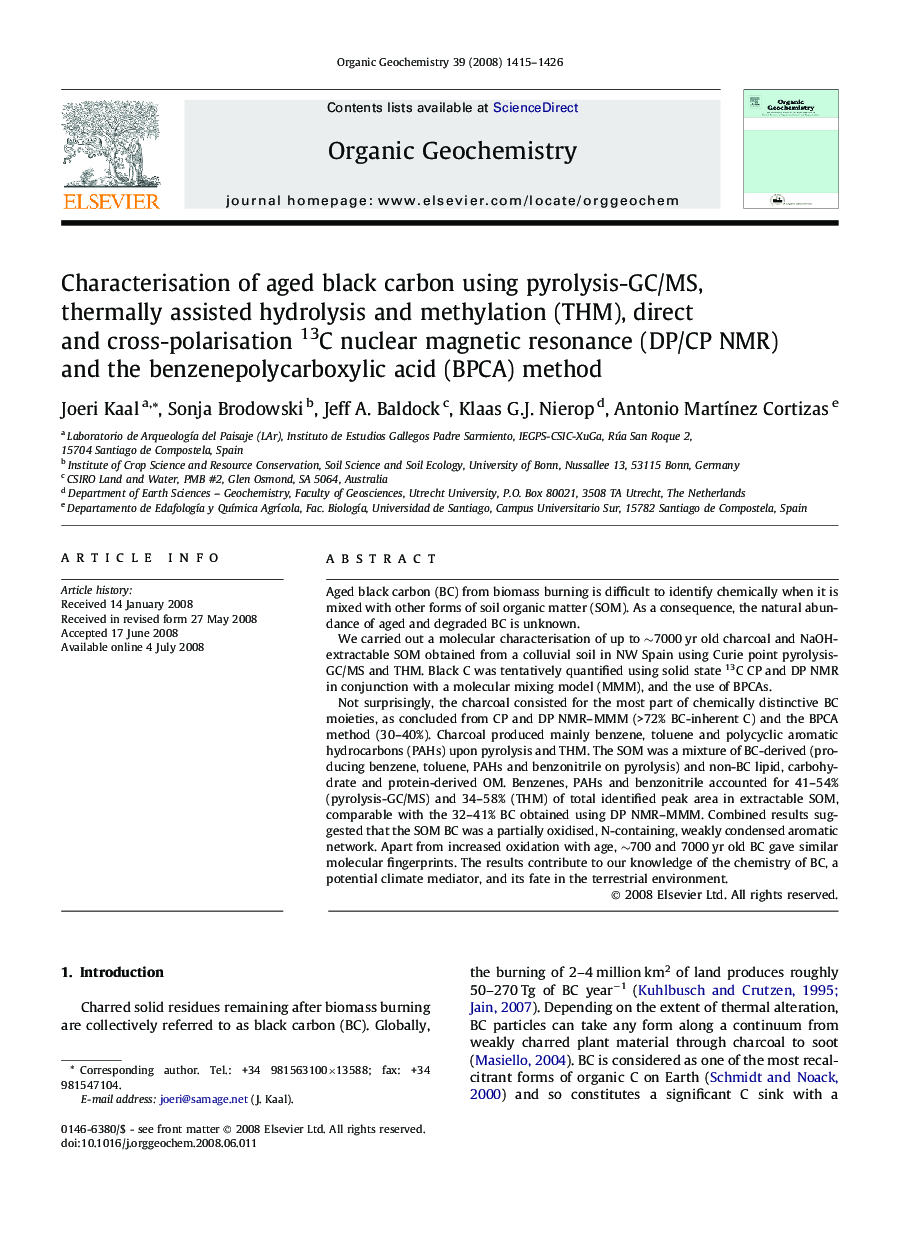| Article ID | Journal | Published Year | Pages | File Type |
|---|---|---|---|---|
| 5163496 | Organic Geochemistry | 2008 | 12 Pages |
Abstract
Not surprisingly, the charcoal consisted for the most part of chemically distinctive BC moieties, as concluded from CP and DP NMR-MMM (>72% BC-inherent C) and the BPCA method (30-40%). Charcoal produced mainly benzene, toluene and polycyclic aromatic hydrocarbons (PAHs) upon pyrolysis and THM. The SOM was a mixture of BC-derived (producing benzene, toluene, PAHs and benzonitrile on pyrolysis) and non-BC lipid, carbohydrate and protein-derived OM. Benzenes, PAHs and benzonitrile accounted for 41-54% (pyrolysis-GC/MS) and 34-58% (THM) of total identified peak area in extractable SOM, comparable with the 32-41% BC obtained using DP NMR-MMM. Combined results suggested that the SOM BC was a partially oxidised, N-containing, weakly condensed aromatic network. Apart from increased oxidation with age, â¼700 and 7000Â yr old BC gave similar molecular fingerprints. The results contribute to our knowledge of the chemistry of BC, a potential climate mediator, and its fate in the terrestrial environment.
Related Topics
Physical Sciences and Engineering
Chemistry
Organic Chemistry
Authors
Joeri Kaal, Sonja Brodowski, Jeff A. Baldock, Klaas G.J. Nierop, Antonio MartÃnez Cortizas,
